1 Introduction
Stepping further into the era of Industry 4.0 is increasingly marked by the rise of machines playing roles traditionally reserved for humans. This shift is particularly visible in the emergence of Digital Twins, Cyber-Physical Systems (CPS), and the Internet of Things (IoT), all of which are the key pillars of this industrial revolution. Creating a digital replica, an integral facet of these advancements, while not a novel idea, has consistently garnered significant interest in the field of simulation over the previous decade. However, the significant limitation of this model-based simulation method is its inherent rigidity, bounded by its design parameters and assigned capabilities.
In the context of production logistics, the use of the model-based methodology has been widespread, primarily due to its robust problem-solving capabilities. These include experimental analysis, ‘what-if’ scenarios, and quantitative comparisons. However, the time-intensive process of requirements collection, feature identification, function development, and user interface customization required to build an effective model emerges as a significant downside [1,2]. In response to these challenges, the data-driven approach, strengthened by machine learning and IoT technologies, has gained traction. This methodology leverages the considerable data volumes generated by interconnected devices, paving the way for the advent of digital twins and CPS in the production logistics sector [3–8].
Contrary to conventional understanding, a digital twin extends beyond being a simple real-world replica. It is a sophisticated system capable of real-time bidirectional data communication between the physical and digital realms [9]. Without this capability, it would be more accurate to use terms like ‘digital model’ or ‘digital shadow’ [4]. The concept of digital twins finds a significant application in the production logistics sphere, not only in product design and development but also in the design, development, and operation of production systems.
Although this use case echoes that of simulation models, the value extracted from model-based simulations and data-driven digital twins in production logistics are distinct. This paper aims to dissect these differences and examine the potential redefinition of the data-driven approach in production logistics, integrating artificial intelligence (AI) with these systems. The paper will begin with a comprehensive literature review to elucidate the concepts and definitions, followed by an exploration of use cases in production logistics, and conclude with a speculative view of these systems’ future when synergized with AI. The objective is to provide both academia and industry with a detailed overview of digitalization in production logistics, underscoring the immense potential of data-driven approach, digital twins and AI.
2 Methodology
This study adopts a structured approach to address three main research questions, each vital for understanding the ongoing transformation in manufacturing. The design of the methodology aims to present a comprehensive and nuanced view of this complex landscape.
RQ1: How has the transition from model-based simulation to data-driven digital twins revolutionized manufacturing?
Peeling back the layers of this transformation involves delving into an exhaustive literature review. This review will critically evaluate and synthesize a selection of recent scholarly articles. This rigorous exploration aims to trace the contours of this shift, identify the main trends and key drivers, and illustrate its significant impact on the manufacturing industry.
RQ2: How does the integration of data-driven approaches, specifically through digital twins, enhance outcomes in real-world production logistics scenarios compared to traditional model-based simulation modeling?
Answering this question requires engaging in a comparative case study analysis. Real-world and lab-scale examples will be dissected, placing side by side the outcomes derived from traditional simulation modeling and those obtained through data-driven digital twin applications. This comparison anticipates shedding light on the advantages and potential of the data-driven approaches.
RQ3: How might the future integration of data-driven approaches and AI reshape the manufacturing field?
Forecasting future developments necessitates a blend of theoretical analysis and practical examination. Beginning with a review of the current academic and industry literature, the existing role of digital twins in data-driven production logistics will be mapped. Following this, exploratory scenarios or simulation modeling will be used to predict potential applications of digital twins, especially with AI integration. This combination of approaches will offer valuable insights into potential future trajectories in the manufacturing field.
By adopting this robust and adaptable methodology, the study seeks to highlight the ongoing shift from model-based to data-driven methodologies in production logistics. It aspires to provide a reliable guide for academics and professionals navigating this transformative landscape.
3. Paradigm Shift: From Model-based Approaches to Data-driven Approaches
Confronted with a plethora of challenges, production systems typically employ two main strategies: the model-based approach and the data-driven approach. The model-based approach harnesses human knowledge and experience for problem-solving, designing, and constructing a model grounded in a profound understanding of the system. Following its design, the model undergoes testing and integration before implementation. While this traditional process has proven valuable, it is notably prone to trial and error, demanding a significant investment of time and effort. Contrasting this, the data-driven approach is more compatible with contemporary manufacturing practices. In this case, a variety of sensors collect data from the production system. This data, forming the nucleus of the data-driven approach, is stored for future use. Advanced AI and machine learning techniques process the stored data, extracting valuable information that finds application in various decision-making processes. These include prediction, optimization, scheduling, and routing. Fig. 1 presents model-based and data-driven approaches in production systems.
In this chapter, the application of both the model-based and data-driven approaches to address issues in production systems will be scrutinized. The lens will primarily focus on simulation for the model-based approach and digital twins for the data-driven approach. Despite the plethora of studies targeting product design and development, this particular exploration uniquely addresses the context of production systems.
There is a discernible trend in literature towards an exponential increase in the use of terms such as “model-based” or “data-driven”, and “simulation” or “digital twin”, especially within the field of manufacturing as presented in Fig. 2. This surge can be attributed predominantly to the onset of Industry 4.0 and the resulting momentum around the concept of digital twins from 2016 onwards. Despite this proliferative trend, a distinctive disparity in the application of “model-based” and “data-driven” terminologies within the context of simulation and digital twin discourse is not evident. Therefore, it necessitates a more detailed exploration in subsequent sections, focused specifically on the intersection of these terms within the realm of simulation and digital twins.
3.1 Intersecting Model-based Approaches, Simulation and Digital Twins in Manufacturing
This subsection delves into the synergy among model-based approaches, simulation, and digital twins within the manufacturing field. The objective is to discern how these three elements interplay and shape the landscape of contemporary manufacturing. The literature incorporated in this subsection spans from 2013 to 2023 and includes articles solely in English. From an initial collection of 26 papers, a rigorous screening process refined the number to 18 noteworthy articles. Table 1 is the summary of the selected papers.
These papers are classified into three categories as in Table 2, each effectively substantiating this argument.
1) Physical Modeling Approaches: The studies in this category employ well-established physical laws and principles to construct their digital twins. Techniques such as finite element analysis and numerical analysis exemplify this approach, grounding their simulations in physical and mechanical properties instead of data patterns. Chen et al. (2022) serves as a prime example, employing Finite Element Analysis where principles of material science and mechanics supersede data patterns [12]. This lends robustness, adaptability, and interpretability to these real-world simulations.
2) Hybrid Modeling Approaches: The papers belonging to this category employ a combination of physical modeling and statistical techniques. Despite their utilization of data for formulating models, these models primarily stem from predefined theoretical constructs. Ghosh et al. (2019)’s use of Hidden Markov Models epitomizes this, where the models, while dependent on statistical assumptions about state transitions, remain heavily reliant on theoretical understanding [15]. This suggests that these models, though using data, are not strictly data-driven, thereby amalgamating the benefits of both theoretical robustness and data adaptability.
3) Structured or Conceptual Modeling Approaches: The final category, structured or conceptual modeling approaches, emphasizes high-level conceptual models to depict complex systems. The ontology-based models in Bao et al. (2020) underscore this, demonstrating a preference for a knowledge-driven approach over a data-driven one [11]. The formulation of the models in this category rests on comprehensive system understanding provided by domain experts.
In conclusion, the review of selected papers underscores the predominant use of model-based approaches in digital twin research, exhibiting their interpretability, adaptability, and robustness. Such approaches prove beneficial in scenarios with limited data availability and where the incorporation of domain knowledge is paramount. This contrasts with purely data-driven models, such as deep learning models, which primarily learn from raw data patterns. Therefore, the significance of model-based approaches in digital twin research, as evidenced by the reviewed papers, is unquestionable.
3.2 Intersecting Data-driven Approaches, Simulation and Digital Twins in Manufacturing
This section delineates the synergistic interplay between data-driven approaches, simulation, and digital twin within the manufacturing industry. It aims to shed light on how these convergent elements collaboratively address the multitude of challenges prevalent in contemporary manufacturing processes. The analysis encapsulates a range of literature, spanning a decade from 2013 to 2023, exclusively comprised of English language publications.
The exploration commenced with a set of 28 scholarly articles. To ensure the utmost relevance to the study’s focal point, a meticulous selection procedure was enforced. Each article was evaluated against distinct criteria, such as its applicability to the domains of manufacturing and production logistics. Articles that emphasized digital twin and simulation models tailored towards comprehensive production systems, rather than focusing exclusively on individual products or machinery, were preferred. This rigorous selection process condensed the initial assembly to a finalized list of 18 articles. A subsequent, more comprehensive analysis was conducted using these chosen articles, with the intent of enriching the understanding of the intertwined dynamics and implications of data-driven approaches, simulations, and digital twins in the manufacturing sector. Table 3 is the summary of key papers exploiting data-driven approaches, simulation and digital twins in manufacturing.
In evaluating the selected research papers on digital twin methodologies, a pronounced inclination towards data-driven approaches, as opposed to purely model-based ones, is palpable. The papers have been classified into three key categories as in Table 4, each substantiating this trend effectively:
4) Data-driven Modeling and Analysis: Papers falling under this category wield data analysis, machine learning, and AI tools to develop digital twin models. These studies utilize extant data patterns for simulating and predicting real-world scenarios, rather than exclusively relying on established physical laws or principles, thus making them flexible and adaptable to the evolving dynamics of manufacturing processes. An example is the deployment of machine learning and AI-based tools in Castane et al. (2023) for high-level decision-making, showcasing the capacity of data patterns to fuel effective decision-making [30].
5) Quality Control and Process Optimization: This category features papers that underline the efficacy of data-driven methodologies in quality control and process optimization. They apply data patterns gleaned from historical manufacturing operations to monitor, control, and optimize various aspects of manufacturing. An exemplar case is by Cai et al. (2021), which employs digital twin technology for quality deviation control, a clear manifestation of data-driven approaches enabling high-caliber manufacturing processes [29].
6) Integration and Interoperability in Manufacturing Systems: The last category comprises studies that emphasize the potential of data-driven methodologies in engendering intelligent, autonomous manufacturing environments. These papers spotlight the exploitation of data patterns to ensure seamless integration and interoperability within manufacturing systems, empowering these systems to adapt to real-time changes. An instance is by Ding et al. (2019), where a digital twin-based cyber-physical production system is employed to enable autonomous manufacturing [32].
In summation, the analysis of these papers accentuates the ascending trend of data-driven approaches in digital twin research, underscoring their adaptability, flexibility, and proficiency in managing the dynamic nature of manufacturing processes. These methodologies exhibit distinct advantages, particularly in scenarios where data availability is high and real-time adaptability is crucial. Unlike model-based approaches that heavily depend on predefined theoretical constructs, data-driven models can learn and adapt from raw data patterns, making them more apt for the continually evolving nature of manufacturing processes. Thus, the value of data-driven approaches in digital twin research, as evidenced by the reviewed papers, is significant and indicates a substantial paradigm shift. This shift aligns with the broader digital transformation trends in the manufacturing industry, where big data and AI are assuming increasingly central roles.
4 Comparative Case Studies
Using the theoretical groundwork set in the previous chapters, Chapter 4 dives into the practical use of both model-based and data-driven approaches in real-world examples. This will give us a chance to compare and understand the strengths and weaknesses of both methods in different settings and help explain why the data-driven approach is becoming more popular in the digital age.
The first case study demonstrates a model-based approach by focusing on a shipbuilding company that employs predefined models and principles to simulate different operational strategies. This case underscores the importance of the model-based approach when there is ample prior knowledge and well-structured information. Conversely, the second case study illustrates a data-driven approach with a real-time location tracking and digital twin system from a lab environment. It utilizes real-time data analysis and machine learning algorithms for system monitoring, control, optimization, and prediction, demonstrating its effectiveness in situations with abundant data and a requirement for real-time adaptability.
By looking at these two different but related case studies, Chapter 4 will give a clear and full understanding of both model-based and data-driven approaches. It will show their strengths and possible weaknesses, providing useful insights into how well they work in different settings. On top of that, it will strengthen our argument for the growing use of data-driven approaches in the field of simulation and digital twins, especially within the quickly changing world of manufacturing and production systems.
4.1 Model-based Approach in Practice: A Shipyard Intra-factory Logistics Case
In the complicated area of shipyard logistics, good management often depends on how transporters operate. Usually, each transporter works independently, focusing on their own tasks and goals. These transporters, assigned to specific areas, mainly spring into action when they receive a task from their assigned area. This case study aims to see how well this approach works for the whole shipyard operation.
To understand this situation, we have set up two different scenarios. The first case, as depicted in Fig. 3, assumes that transporters stay within their assigned areas, which is the standard procedure in most shipyards. This mirrors the typical strategy in most shipyards. However, in the second case, we imagined a situation where these area limits are removed. This allows all transporters to work anywhere, regardless of their original assigned areas.
Comparing these two cases led to some interesting findings. When transporters stayed in their assigned zones, the total travel distance was 1,157.24 km. However, when transporters could work anywhere in the second case, the total travel distance went down to 962.07 km. These numbers suggest that having transporters stick to assigned zones may not be the best approach if you want to lower the overall travel distance. When we looked at the use of transporters of different sizes, we also found differences between the two cases. The first case mostly used transporters that can carry 350 and 500 tons. But in the second case, there was a noticeable increase in the use of larger transporters that can carry up to 1,000 tons. These results are clearly shown in Fig. 4, which compares the total travel distance based on the maximum size of the transporter. In the first case, transporters that can carry 350 and 500 tons are used the most. But in the second case, there’s a clear shift towards using larger transporters that can carry 1,000 tons.
These findings, derived from the model-based simulations, suggest that traditional zone assignments might not be the most efficient strategy. It points towards potential improvements through a more integrated planning approach. This case underscores the importance of model-based approaches in providing insights into operational efficiency based on pre-determined principles and models.
This case study clearly shows the strengths of the model-based approach. By outlining operational scenarios in great detail, model-based simulations let us explore how the system works. This gives us valuable insights into how efficient the overall operational strategies are. It allows us to test out a variety of scenarios and make decisions based on a deep understanding of the whole system. On top of that, the modelbased approach is easy to understand. It gives us a detailed look at each part of the system, helping us understand how each part contributes to the overall performance. This makes it easy to spot where things could be better and to predict what might happen if we make changes. But despite these strengths, the model-based approach has some limitations. These models often need detailed and accurate information to work properly. If this information isn’t available, the model’s results may not be reliable, which could lead to wrong decisions. Also, modelbased simulations are static and might not capture the dynamic nature of real-world operations, especially in complex systems like shipyards. This could limit their ability to account for real-time changes and unexpected events. Lastly, model-based approaches can take a lot of time and resources, which could limit their use in fast-paced environments or in organizations with limited resources.
In summary, while model-based approaches give valuable insights and help us make informed decisions, they need to be used in the right context. This highlights the importance of other methods, like data-driven ones, which can tackle some of these limitations and give a more complete understanding of complex systems. In the next section, we’ll look at a data-driven approach in a similar context, showing its strengths and how it compares to the model-based approach.
4.2 Data-driven Approach in Practice: Autonomous Mobile Robot Operations with Digital Twins
Autonomous Mobile Robots (AMRs), the self-driving robots, have revolutionized logistics management in the manufacturing sector. Recognizing the potential to drastically improve operational efficiency, this case study explores the use of data-driven digital twins to refine AMR operations in a controlled lab setting. Here, digital twins function to emulate and mirror AMR operations in real-time, crafting a dynamic, digital echo of the physical system. This approach paves the way for immediate data communication between the physical AMRs and their digital doppelgangers, facilitating swift detection, prediction, and correction of operational inefficiencies. Fig. 5 visually represents the interaction between the physical AMRs and their digital counterparts.
For this experiment conducted in a controlled lab environment, a team of AMRs was deployed, each equipped with sensors to continuously monitor and broadcast their operational status. This data was streamed in real-time to a digital twin platform, subsequently generating an accurate, dynamic replica of the active AMR fleet. This digital twin platform was designed to process and analyze the incoming data, utilizing machine learning algorithms to anticipate potential roadblocks, scheduling conflicts, and efficiency gaps in the AMR operations. With these predictive insights, proactive actions could be taken in real-time, enhancing the overall efficiency of the AMR fleet. Fig. 6 showcases a dashboard view of the digital twin platform, featuring real-time data visualization of AMR operations.
This case study, rooted in real-time data analysis and machine learning algorithms, vividly demonstrates the multitude of benefits that data-driven approaches can bring, with the potential to revolutionize logistics and operational elements across various industries. It emphasizes the ability of data-driven methods to adapt swiftly to operational changes and predict potential disruptions based on current data trends.
Secondly, data-driven strategies offer high adaptability to changing conditions. By learning from new data, these strategies can adjust to variations in patterns, environmental conditions, and operational variables. This is especially beneficial in dynamic and unpredictable industries like manufacturing. Moreover, the capacity of data-driven approaches to process high-dimensional and complex data proves invaluable for understanding intricate systems.
In the case study, the digital twin platform accurately replicated AMR operations by analyzing a wide range of data, spanning position, speed, battery status, and operational health. The insights derived from this complex data helped optimize the AMR operations, showcasing the potential of data-driven strategies to improve complex real-world systems. Lastly, the predictive capability of data-driven approaches, powered by machine learning algorithms, paves the way for proactive problem-solving. The case study showed that potential operational disruptions could be predicted and mitigated in advance, reducing the likelihood of severe setbacks.
Despite certain limitations of data-driven approaches, such as dependency on data quality and volume, the advantages significantly outweigh these constraints. The data-driven approach demonstrated its effectiveness in enhancing operational efficiency in the study, implying its extensive potential for application in various other fields. By continuously refining these strategies, it’s possible to uncover new opportunities for optimization and efficiency across a wide range of sectors.
5. Integrating Data-driven Approaches and AI
5.1 The Power and Promise of Data-driven Approaches in Digital Twins
Manufacturing stands at the edge of a significant shift, powered by the blending of data-driven approaches and AI. This new mindset provides a groundbreaking approach to manufacturing processes and production logistics, offering unmatched advancements in efficiency and optimization. The key to this transformation is the concept of digital twins - these dynamic entities are more than mere digital reflections or static representations of their physical equivalents.
With their real-time, two-way data exchange capabilities between the digital and physical worlds, digital twins have the extraordinary ability to foresee future behaviors, optimize processes, and solve problems. They’re all set to redefine the face of data-driven production logistics, opening new doors for enhanced operational performance. By integrating advanced AI models like ChatGPT into digital twins, the scope for innovation becomes even broader. These AI technologies boost the predictive capacities of digital twins, empowering them to analyze complex patterns, anticipate and prevent system disruptions, and propose optimized solutions. The alliance between digital twins and AI technologies prepares the ground for a new age of smart manufacturing. Digital twins in the manufacturing industry today play an immense role and make a wide range of substantial contributions to data-driven production logistics. These applications and research results display the real-world impact of digital twins, offering a thorough understanding of their present state. Reviewing their current role in manufacturing sets a foundation for predicting their future possibilities.
Looking forward, merging digital twins with AI technologies holds huge promise for the future of production logistics. The combined power of digital twins and AI offers countless opportunities to revolutionize manufacturing processes, enhance resource allocation, improve predictive maintenance, boost decision-making, and assure superior quality control. This integration has the potential to transform the manufacturing landscape, elevating efficiency, productivity, and overall system performance to new heights. By harnessing the power of data-driven methods and AI technologies, manufacturers can discover unprecedented insights and capabilities. The future of manufacturing lies in the seamless fusion of digital twins and AI, ushering in a new era of smart, data-driven production logistics.
5.2. Leveraging Large Language Models for Dynamic Production Logistics Scheduling Enhancement
Large Language Models (LLMs), like GPT-4, present a fresh approach for optimizing production scheduling in manufacturing. These models can handle complex operational sequences, allocate resources effectively, and tackle real-time disruptions, altering the way agents function [47]. Consider a manufacturing environment with multiple production lines, each outfitted with several machines, each with unique capacities and abilities. Tasks with diverse requirements, from materials and specific machines to exact delivery times, come pouring in. An LLM, when trained on historical scheduling data from this setup, can suggest schedules for new tasks while considering task requirements and the existing state of the production lines.
Such a model embodies the innovative solutions that AI and data-driven techniques can offer to tackle intricate manufacturing challenges. The next essential step is to deploy a pilot of this model in a real-world setting, gather feedback, and tweak the model iteratively based on the feedback, reinforcing the strength of AI applications in actual manufacturing scenarios. Consider the following schedule Table 5 as an example. A planner might pose several queries to the LLM (ChatGPT with GPT-4), demonstrating how it can address various real-world production logistics issues. These queries and their raw LLM responses are detailed in Table 6, showcasing how LLMs can help streamline operations in manufacturing, potentially changing the game in production logistics.
As seen from the responses in Table 6, the LLM provides solutions to complex logistical issues that arise in a typical manufacturing environment. These results reflect the raw output from the LLM when given the respective prompts. While the solutions offered may require refinement and context-specific adjustments, they showcase the potential of integrating AI, specifically large language models, into production logistics processes.
6 Discussion
6.1. The Evolving Role and Potential Applications of Digital Twins and AI in Production Logistics
As the digital revolution continues to grip the field of production logistics, digital twins and AI are primed to claim a more prominent role. These innovative technologies are on the cusp of bringing forward creative solutions aimed at accelerating efficiency, enhancing productivity, and propelling overall system performance to the next level. In the landscape of potential future applications, scenarios are being crafted, and simulation models are being developed that project these technologies as instrumental game-changers in multiple domains. From refining supply chain management to fine-tuning predictive maintenance, from enabling real-time decision-making to strengthening quality control processes - the prospective applications of digital twins and AI are extensive and transformative.
6.2 Challenges and Opportunities for Future Research
The forward-looking landscape painted by the integration of digital twins and AI is, undoubtedly, promising. However, along the path towards this bright future, there exist several hurdles and stumbling blocks. Challenges such as ensuring data privacy and reliability, creating reliable predictive models, securing sufficient computational resources, and navigating the intricacies of integrating digital twins with existing infrastructures need to be addressed to fully harness the potential of these technologies.
However, it is crucial to remember that each challenge is not merely an obstacle but a portal to further exploration and discovery. For instance, progress in the field of data encryption technologies can mitigate privacy concerns, while ongoing advancements in computational technologies and cloud-based solutions could help alleviate resource limitations. Equally, the quest for more robust models to augment the predictive accuracy of digital twins and AI, coupled with the need for innovative strategies for efficient integration with existing systems, offer fascinating opportunities for future research. Each step taken towards resolving these challenges not only pushes the boundaries of the field but also moves the industry closer to the ultimate vision: a fully automated, data-driven production logistics system.
The intersection of digital twins and AI in production logistics is a confluence of endless possibilities, a meeting point of challenges and opportunities. As the march towards an increasingly digitalized world continues, this intersection will continue to grow in importance, guiding the evolution of production logistics and manufacturing industries into a new era.
7 Conclusion
7.1 Summary of Key Insights and Exploration of Research Questions
This exploration sought to address three critical research questions related to the application of digital twins and AI technologies in the manufacturing domain.
RQ1 investigated the shift from traditional model-based simulations to data-driven digital twins within manufacturing. An extensive review of the existing literature demonstrated that this shift was largely motivated by the necessity for real-time data processing, heightened system accuracy, and more efficient decision-making procedures. It was found that digital twins, with their impressive real-time, bidirectional data exchange capabilities, held significant potential to meet these requirements and consequently revolutionize the manufacturing sphere.
RQ2 took a practical lens, examining the impact of integrating data-driven approaches, particularly through digital twins, on real-world logistics scenarios as opposed to traditional model-based simulation modeling. Through a thorough case study analysis, it was revealed that applications of digital twins, backed by data-driven approaches, led to more accurate predictions, quicker responses, and superior system performance. This underscores their immense potential in the realm of production logistics.
RQ3 was a future-oriented inquiry, probing the potential of the amalgamation of data-driven approaches and AI technologies to redefine the manufacturing landscape. A survey of existing literature and future scenarios indicated that digital twins and AI technologies have the capacity to revolutionize production logistics. Their potential applications, including but not limited to improved predictive maintenance and optimized supply chain management, could engender a highly efficient, data-driven, and intelligent manufacturing environment.
7.2 Implications and Future Directions
The findings from this exploration suggest a future where digital twins and AI technologies are central to production logistics. Their anticipated roles in improving system performance, enabling real-time decision-making, and ensuring superior maintenance strategies point towards an invigorating future for the manufacturing industry. Nonetheless, the journey towards this future is filled with several obstacles that need to be overcome. As the field progresses, continuous research and inventive solutions are crucial to tackling these challenges. This study, with its insights and findings, aspires to lay a robust foundation for future research and thereby contribute to the ongoing evolution and growth of data-driven manufacturing logistics.



 E-mail
E-mail Print
Print facebook
facebook twitter
twitter Linkedin
Linkedin google+
google+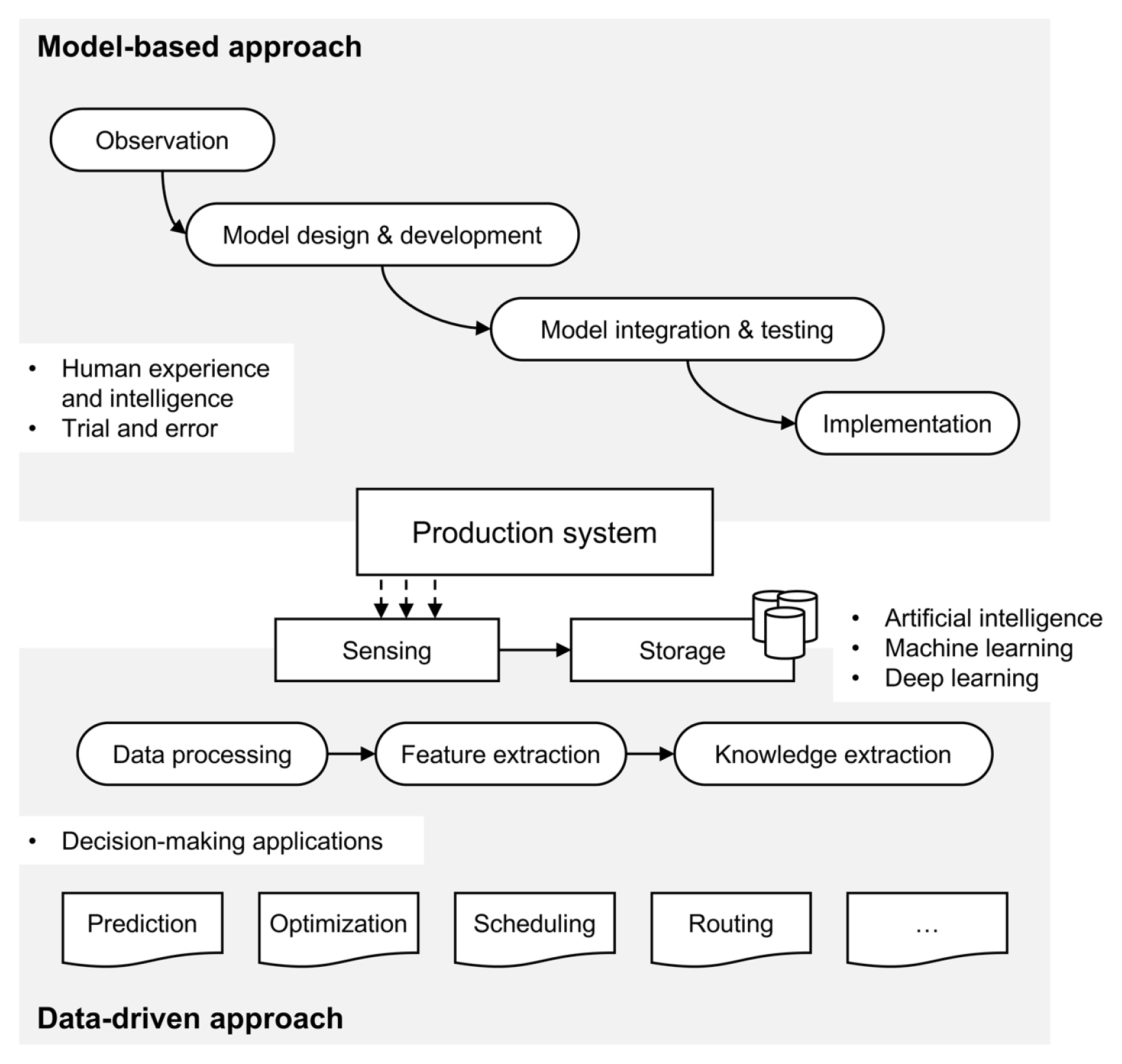
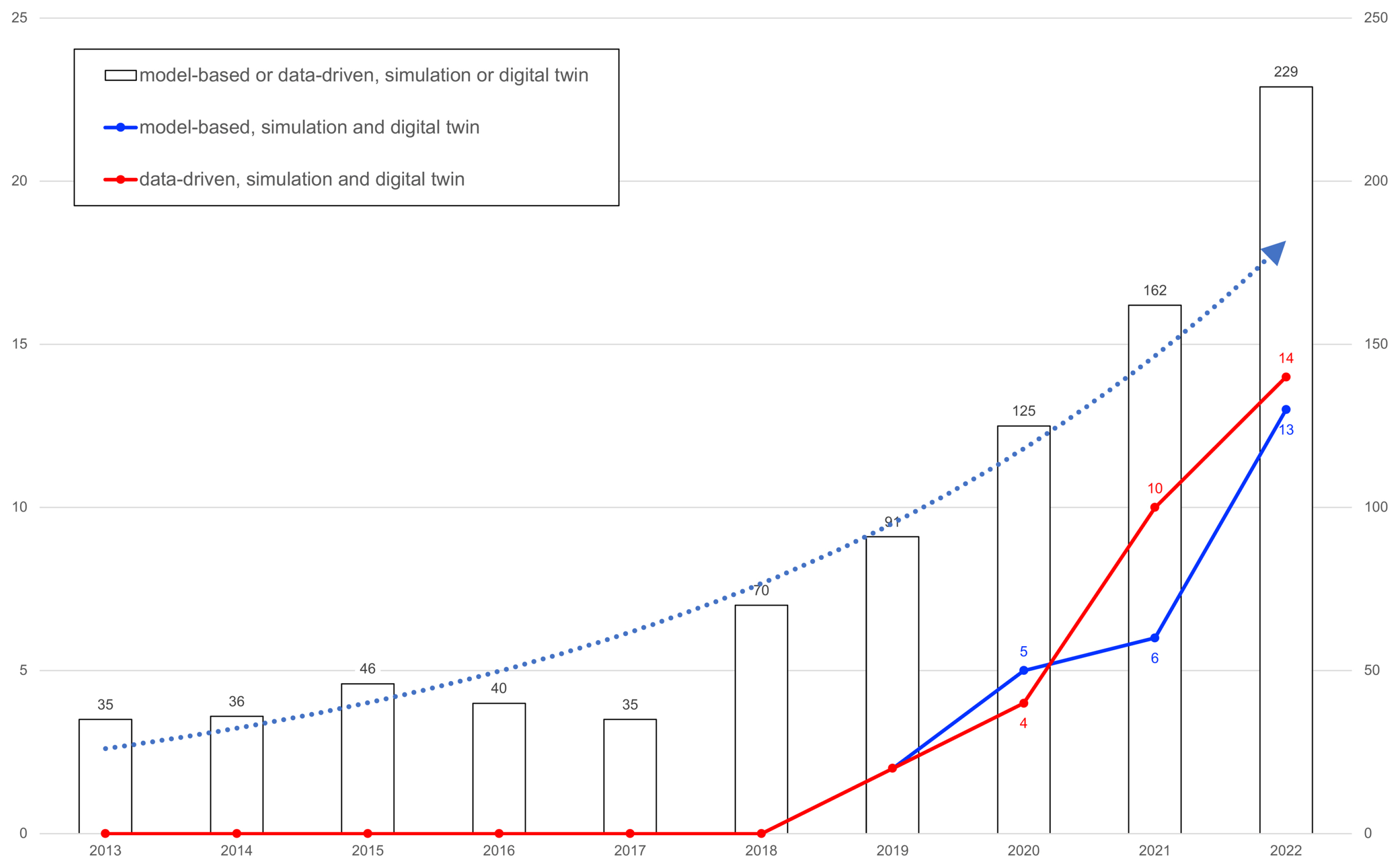
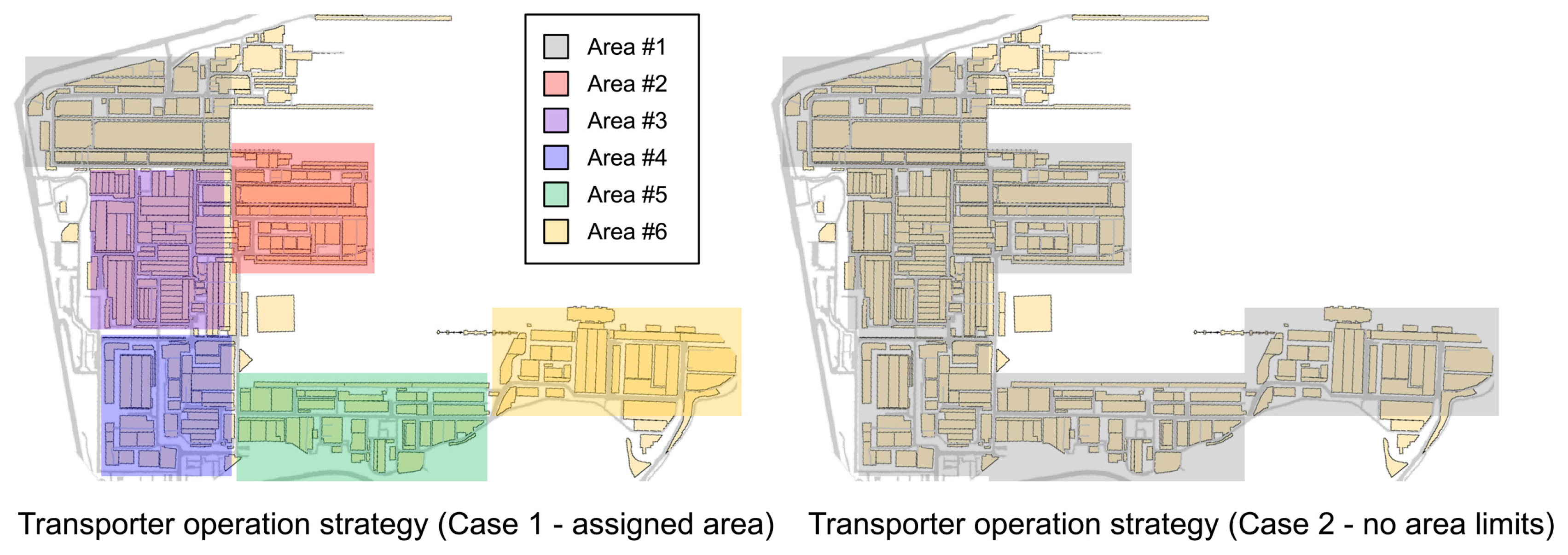
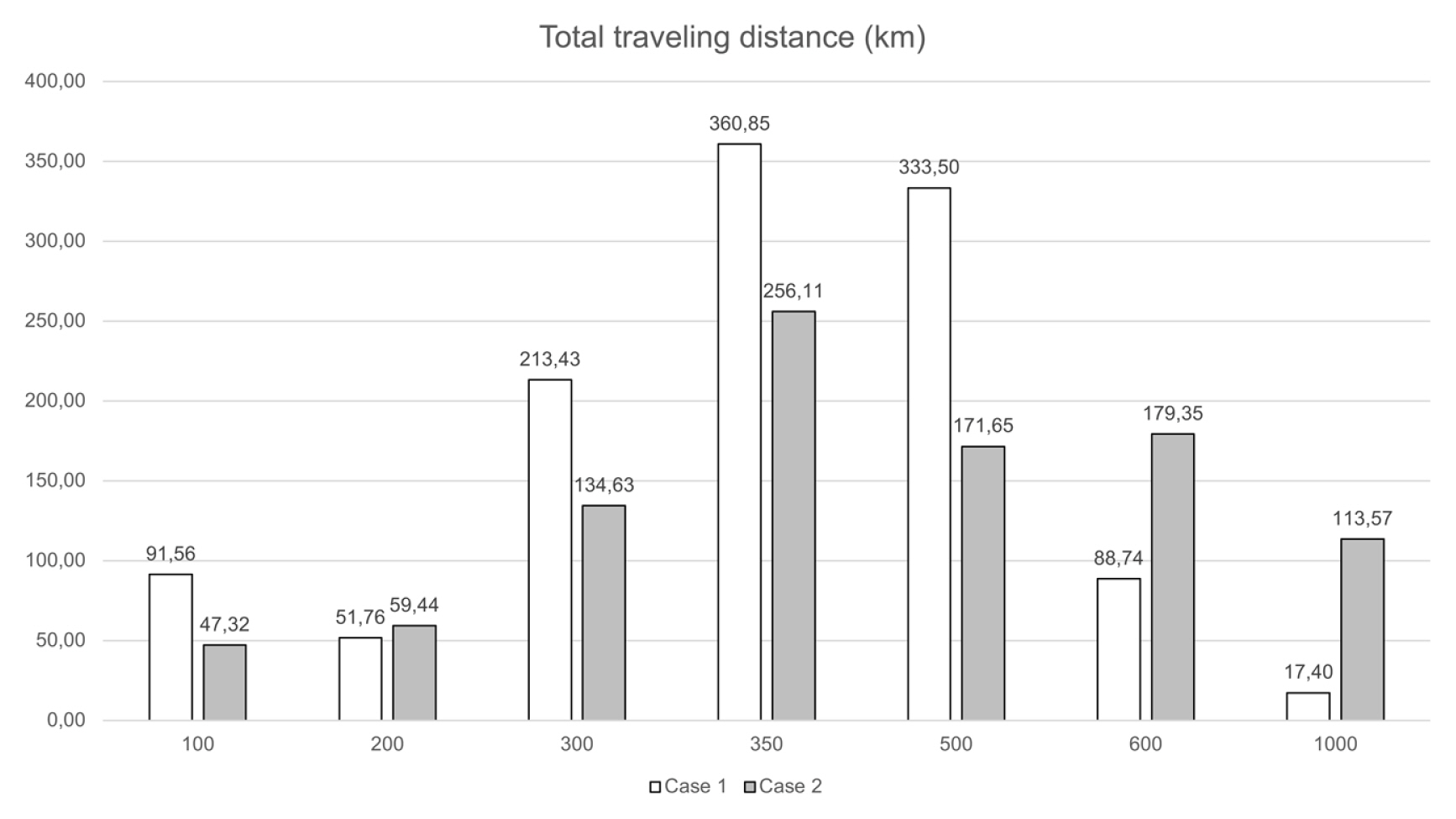
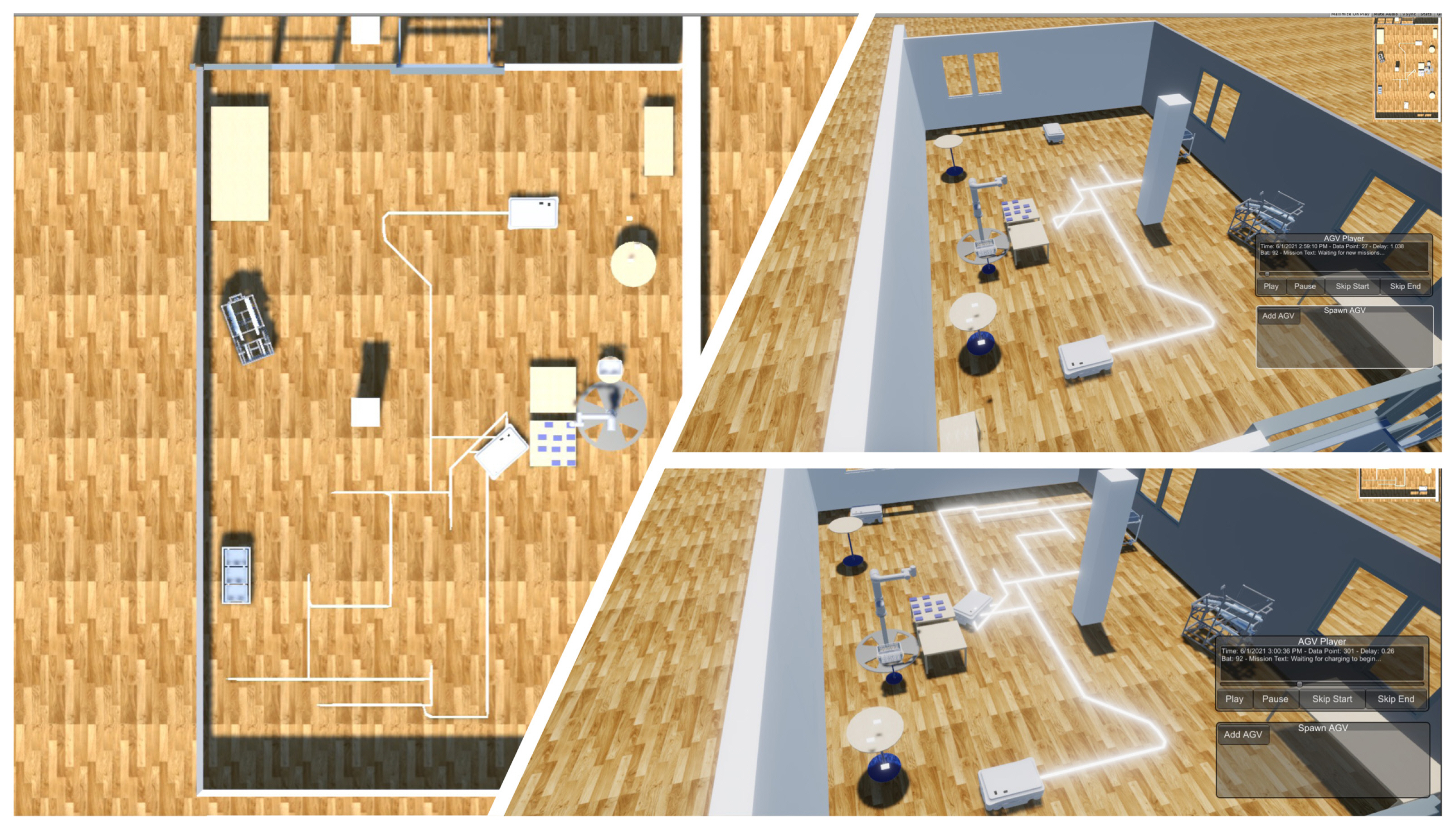
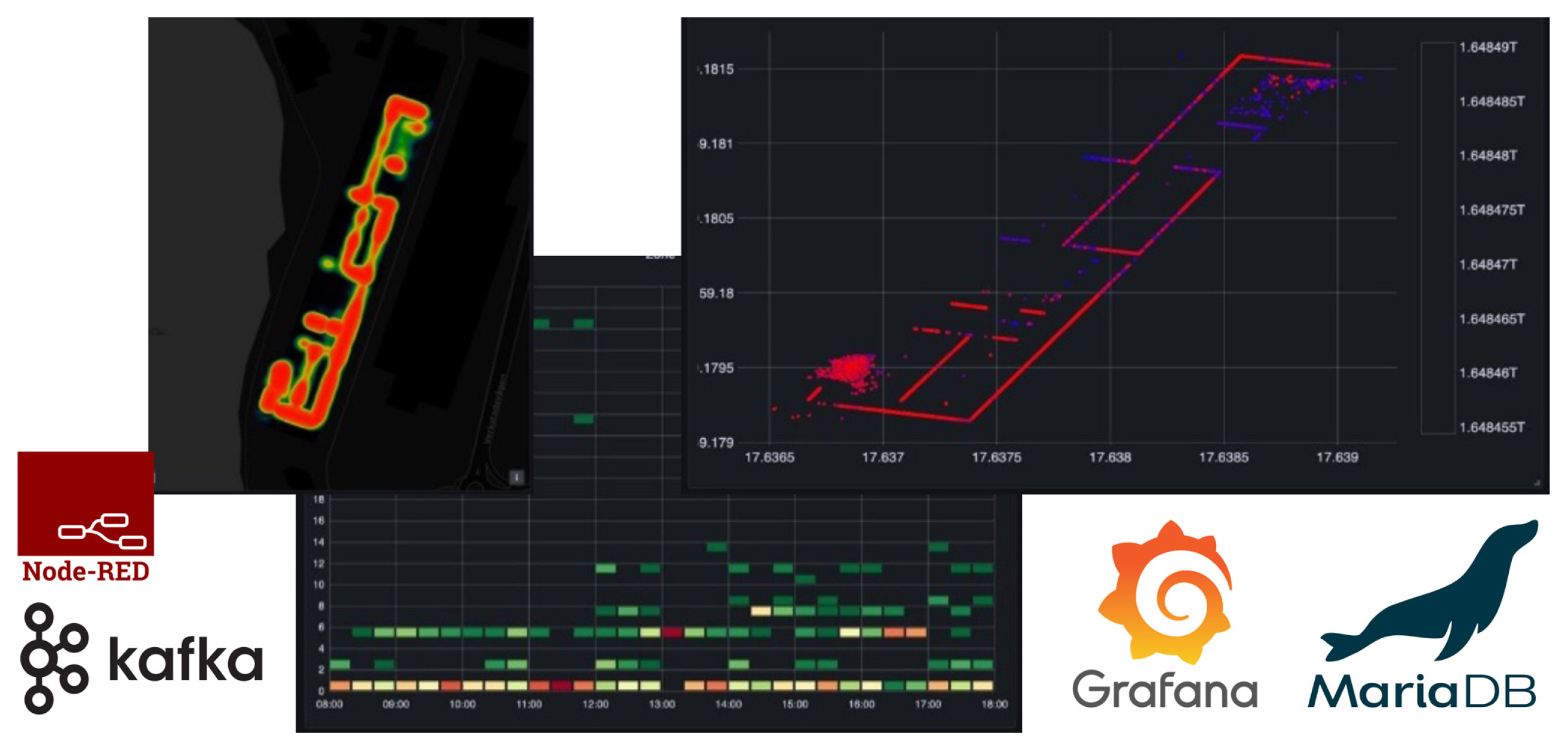

 PDF Links
PDF Links PubReader
PubReader Full text via DOI
Full text via DOI Download Citation
Download Citation  CrossRef TDM
CrossRef TDM



